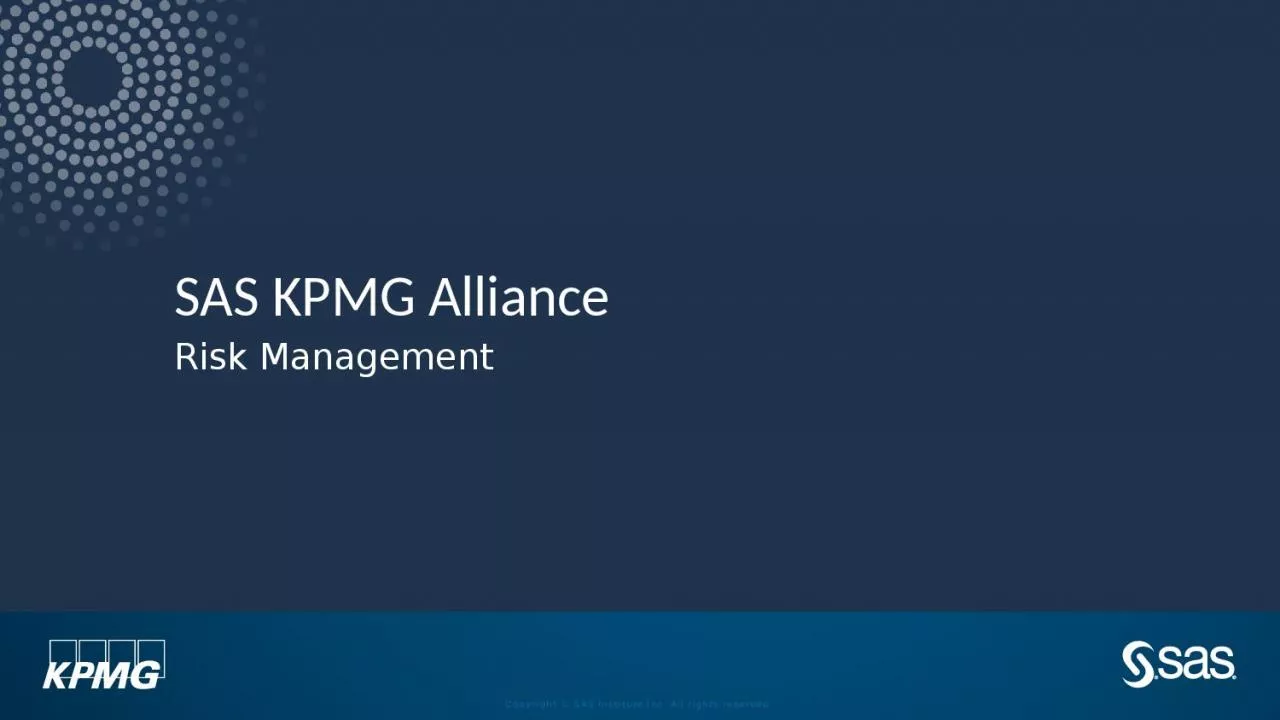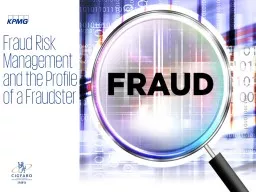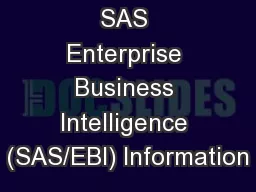PPT-SAS KPMG Alliance Risk Management
Author : erica | Published Date : 2023-11-05
Risk Management is a core strength for SAS Acknowledged leader in Risk Management Solutions Deployed in 50 countries by 1400 organizations Top 3 vendor for the 7th
Presentation Embed Code
Download Presentation
Download Presentation The PPT/PDF document "SAS KPMG Alliance Risk Management" is the property of its rightful owner. Permission is granted to download and print the materials on this website for personal, non-commercial use only, and to display it on your personal computer provided you do not modify the materials and that you retain all copyright notices contained in the materials. By downloading content from our website, you accept the terms of this agreement.
SAS KPMG Alliance Risk Management: Transcript
Download Rules Of Document
"SAS KPMG Alliance Risk Management"The content belongs to its owner. You may download and print it for personal use, without modification, and keep all copyright notices. By downloading, you agree to these terms.
Related Documents














